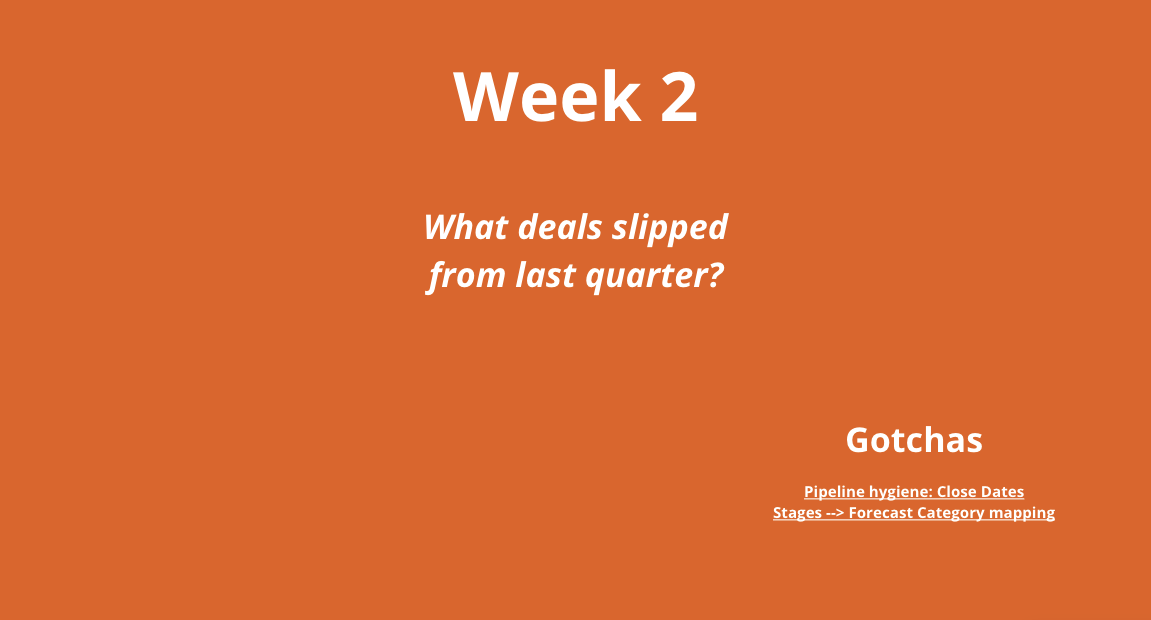
Exercise:
Navigate to Analytics → Flow
- Find Slipped Deals From Last Quarter
- ie “Deals that had a close date in Q2 but at some point (in Q2) the close date was pushed into Q3, or later.”
- Note where the slippage came from
- ie “What stages were the deals in when they slipped?”, “Was deal slippage significantly different across deal sizes?”
- Share takeaway(s) w/group below









